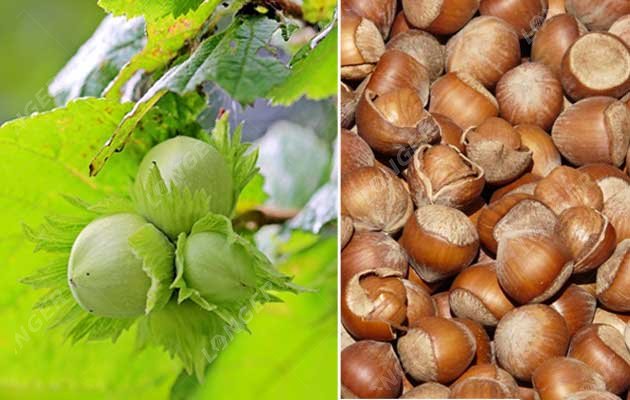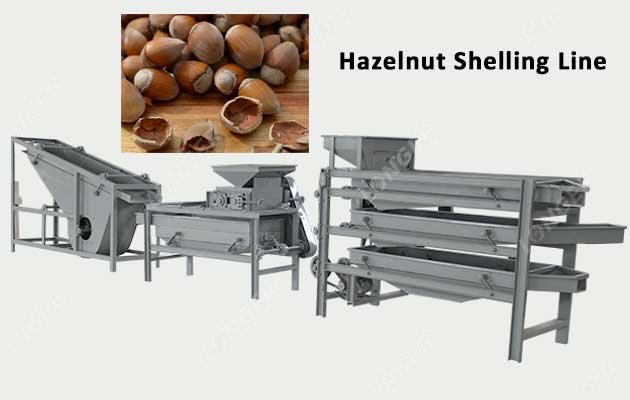How is Hazelnut Processed? From Harvest to Shelling
Hazelnut is one of the four major nuts in the world. Because of its rich nutrition and unique taste, it enjoys an international reputation. The processing process of hazelnuts is more complicated, so how is hazelnut processed? See below.
1. Harvest Hazelnuts:
We can pick the hazelnuts, or pick the buds with stalks together, or wait for the fruits to fall to the ground before picking them up, picking the fruits every other day, and picking the hazelnuts in stages.
Or take the big oscillating branches to make the hazelnuts fall to the ground, and then collect them together and transport them to the fruit yard to be unbuded. Usually in the fruiting period, hazelnuts can yield 220-250 kg per mu.
Freshly harvested hazelnuts have a large water content and many impurities. They must go through processes such as debuding, impurity removal and drying to meet the requirements of commercial hazelnuts.

2. Drying:
Freshly harvested hazelnuts have a large water content and many impurities. They need to go through processes such as debuding, impurity removal, and drying to meet the requirements of commercial hazelnuts.
Hazelnuts can be placed directly on a dry and ventilated cement floor for ventilation and drying. Generally, the thickness of the stack is about 20 cm, which is easy to dry.
During the stacking process, pay attention to checking the temperature and humidity in the pile. If the husk is too wet and fermented, it will cause the husk to become too dark and lose its luster, and in severe cases, it will make the hazelnuts inedible.
It is usually turned 1-2 times a day during drying. After 6-8 days of drying at a temperature of 18°C-22°C, the moisture content of hazelnuts can be reduced to 5%-7%, and they can be collected and stored.

3. Storage:
Hazelnuts should be stored in a low temperature, low oxygen, dry and dark environment. The suitable temperature condition is 15℃-20℃, and the relative humidity of the air is 60%-70%. Under these conditions, hazelnuts can be stored for two years without deterioration.
4. Classification:
Hazelnuts are still wrapped in a hard shell. If you want to make more hazelnut foods, such as hazelnut paste, hazelnut powder, etc., you must first remove the shell. We must first divide the hazelnuts into several levels according to the size, which can greatly increase the shelling rate.
5. Shelling:
Usually we need to use equipment to remove the hazelnut shell, which is more efficient and the shelling rate can reach 98%. The working principle of the general dehulling machine: squeeze the hazelnuts and crush the shell by adjusting the gap of the processing rollers at all levels.
6. Separation of shell and kernel:
The shells and kernels of the husked hazelnuts are mixed together. A professional shell and kernel separator is required to separate the shells and kernels, and then a clean hazelnut kernel is obtained.
The picture below is a set of professional hazelnut shelling line, which completes the whole process of grading, shelling and shell kernel separation. Large output and high production efficiency. If you want to achieve large-scale processing of hazelnuts, this set of equipment is your good choice.

Message
